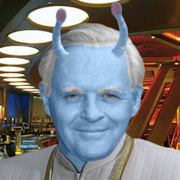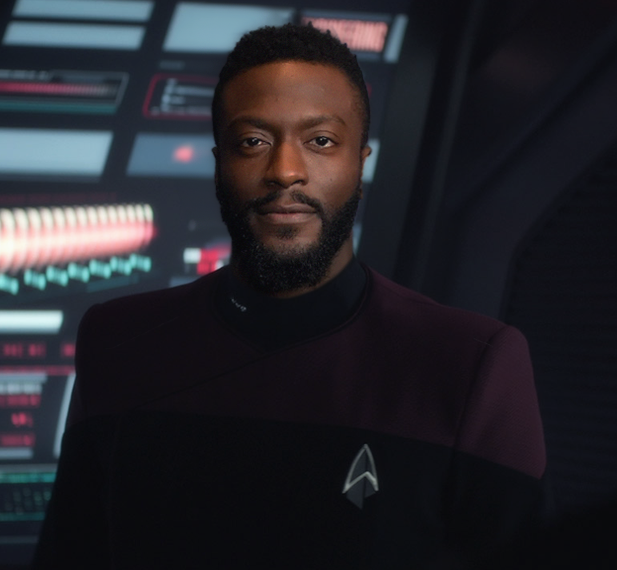The Narendra-class station known as Deep Space 4 hung like a steel mushroom over the stormy gas swirls of Changxi III, pulsing with static as system-wide alerts flared across every deck. Subspace lanes were fraying, communications stuttered in and out, and the station—like the system around it—teetered on the edge of panic.
Civilian transports, research skiffs, and independent freighters drifted in disordered clusters, jostling for emergency clearance. Docking arms strained at capacity—some vessels latched to the hull, others hovered nearby, waiting, hoping, pleading for permission to dock. DS4’s defense fighters wove tight patrol loops through the thickening orbital mess, weapons hot but largely untested against the scale of what loomed just beyond sensor range.
A priority signal from Changxi IV had broken through hours earlier—fragmented and urgent. Since then: silence. With the Underspace collapsing and spreading chaos across the sector, this might be the last chance to reach the colony before it too vanished into darkness.
Amid the disorder, one ship was preparing to launch.
The USS Seoul, a New Orleans-class frigate, had undergone a rapid refit over the past 36 hours. Her portside sensor pod gleamed under DS4’s harsh lighting, while a freshly-installed sentry pod clung to the starboard hardpoint. The vessel’s standard cargo pod had been swapped for an emergency transport module. Hazard markings had been stenciled onto key hull access points, and the pod assemblies glowed faintly blue with pre-ignition readiness. She looked less like an explorer and more like a weapon—precise, mobile, and just sharp enough to matter.
On the bridge, Commander Adeola Johnson stood near the forward viewport, hands clasped behind his back, his gaze steady on the stars ahead. The silence wasn’t solemn—it was focused. Around him, status displays blinked green, the final sequence of prelaunch indicators falling into place.
Outside, DS4’s defense fighters launched in staggered waves, peeling off the station like sparks from a grinder. Each formation moved to screen the most vulnerable flanks of the system. His eyes tracked their motion for a moment before shifting upward to the upper pylon—where a battle-worn Akira-class heavy cruiser remained docked and dark. Its torpedo bays sat empty. Warp coils vented coolant in dull, rhythmic pulses. The ship had been undergoing deep refit when the Blackout struck. She would not be joining them.
Responsibility had passed to the Seoul—patched, re-podded, and hastily armed by DS4’s tired but relentless engineers.
Johnson drew a slow breath. He had spent nearly every posting of his career in the Security track. He’d boarded hostile vessels, negotiated hostage stands, and walked into more than one ambush. But this felt different.
Less like a mission. More like a reckoning.
A subtle tremor rolled beneath his boots as the docking clamps disengaged. The low hum of the impulse engines began to rise beneath the deck plating.
He turned from the viewport, surveying the bridge crew as they worked through final launch procedures. Junior officers spoke in clipped tones, eyes fixed on readouts. Department heads moved with purposeful calm. They knew what they were walking into—at least, what little of it Starfleet could predict.
At Tactical, Lieutenant R’Kala entered a final command sequence.
“Commander, final torpedo loads confirmed,” she said. “Phaser coil stabilizers are synchronized with the tactical pod interface.”
She paused.
“As a precaution, I’ve unlocked all shipboard weapons lockers. Section leaders will complete final arming codes at their discretion.”
“Understood,” Johnson said. “We’re launching under red alert.”
“Acknowledged,” R’Kala replied. “The sentry pod is programmed to detach at our orbital waypoint above Changxi IV. Once released, it will deploy into a wide-field defensive pattern. Maximum link range is holding at two hundred thousand kilometers. It will go active within ninety seconds.”
“Good,” Johnson said. He stepped closer. “Did we get the Voyager sensor data on the Vaadwaur?”
“It’s in the system,” she said. “The profiles are over thirty years old… but they’re better than nothing.”
“We’ll work with what we’ve got.”
From the Ops station, Lieutenant Arjin Tal looked up from his console.
“Commander, final launch manifest is confirmed,” he said. “Total crew aboard: one hundred eighty-seven officers and enlisted. We’re at sixty-two percent capacity. Non-essential personnel have been reassigned to DS4 or diverted to system-wide relief teams. Science has been scaled down to a two-person subteam for real-time subspace turbulence mapping.”
Johnson gave a curt nod. “We’ll make it work.”
At Helm, Lieutenant Maria Espinoza’s fingers hovered over the controls as she finished final route alignment.
“DS4 Flight Ops just confirmed our departure corridor,” she said. “Civilian lanes are rerouting to give us a clean vector.” She hesitated briefly. “I’m surprised they didn’t authorize a micro-warp burst. It would have saved time.”
“DS4’s commander did what he could,” Johnson said. “Anything more would’ve needed approval from Task Force Command or Starfleet.”
T’Vaal, seated beside him, stood with typical Vulcan calm.
“Micro-warp remains a valid maneuver under Red Alert protocol,” she said. “Until rescinded, it remains within Starfleet parameters.”
Johnson nodded again and dropped into the command chair.
“If there are still people alive on Changxi IV, we’re their best chance. If not, we need to know why.”
Espinoza glanced down as her console lit green.
“Approach vector aligned. We’re at the edge of our corridor.”
“Put us two hundred klicks past the orbital waypoint,” Johnson ordered. “Red alert. All hands to battle stations.”
“Aye, sir,” Espinoza replied. “Course plotted. Engines ready.”
Johnson’s gaze locked onto the forward viewscreen. Beyond it lay a broken system—and a colony that might already be lost.
The only starship in the system flying toward the fire…instead of away from it.

 Bravo Fleet
Bravo Fleet













